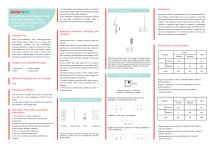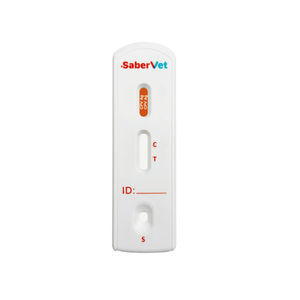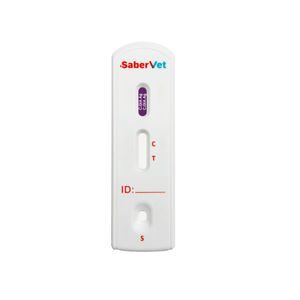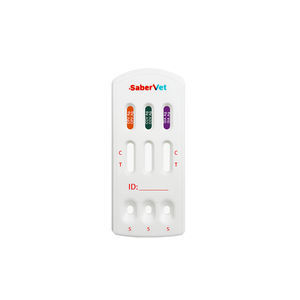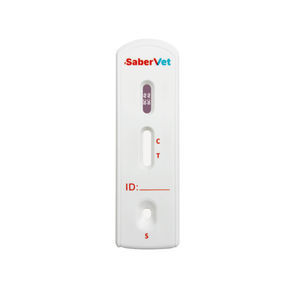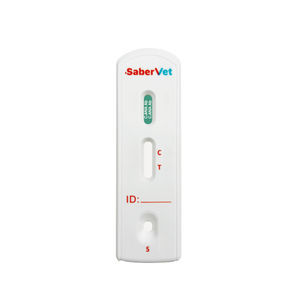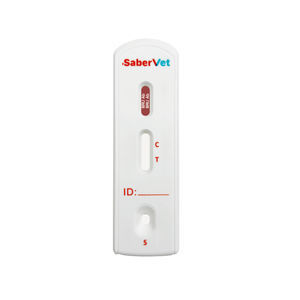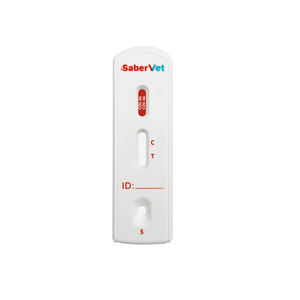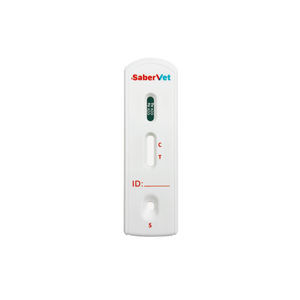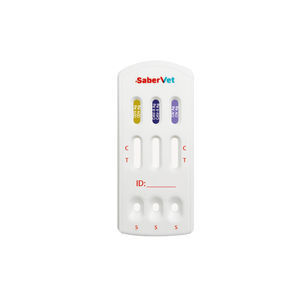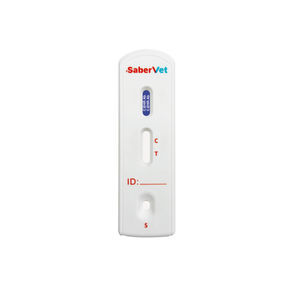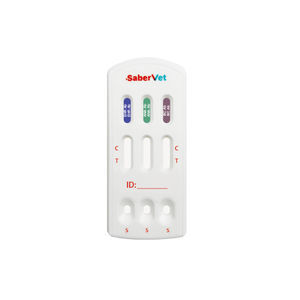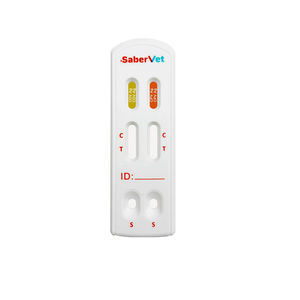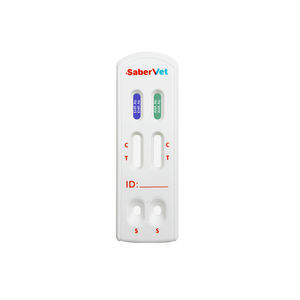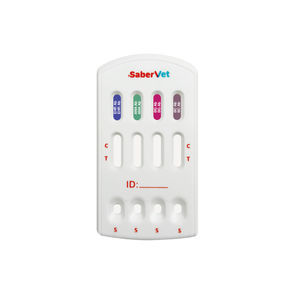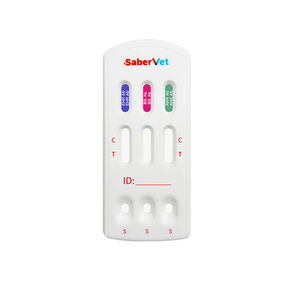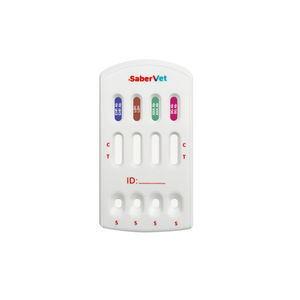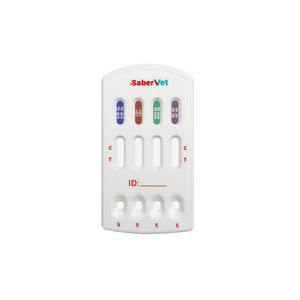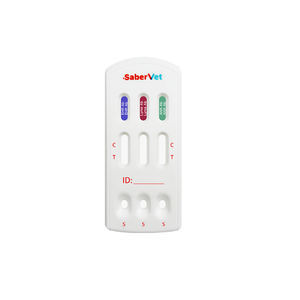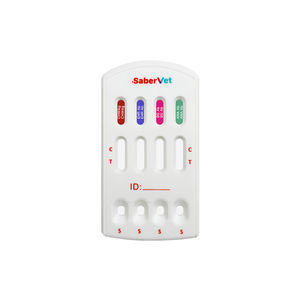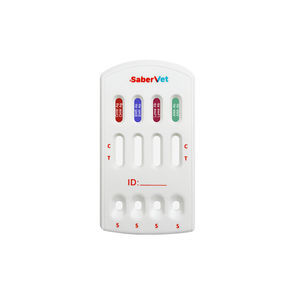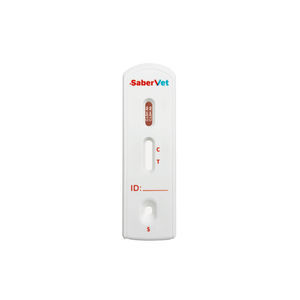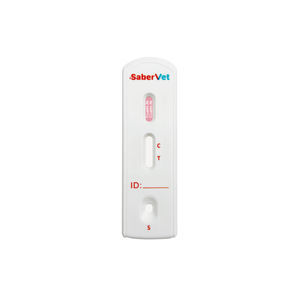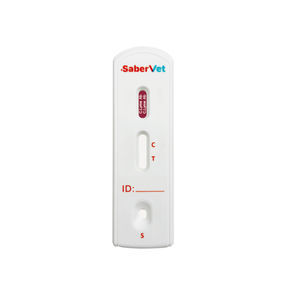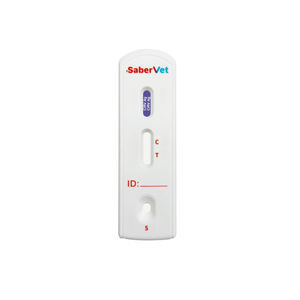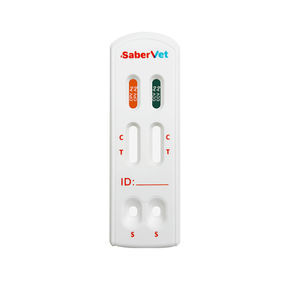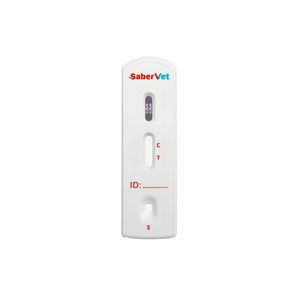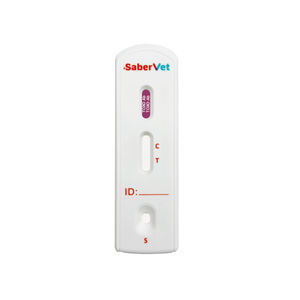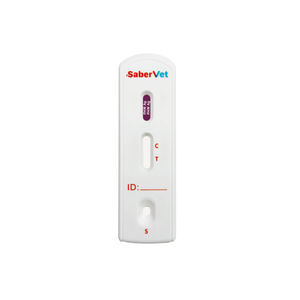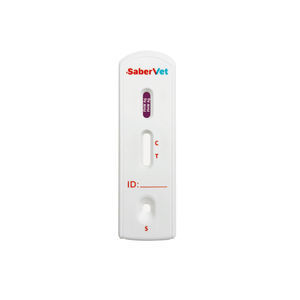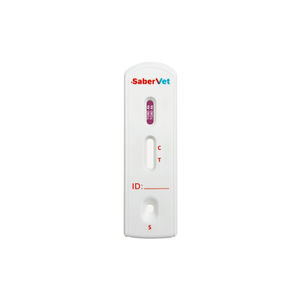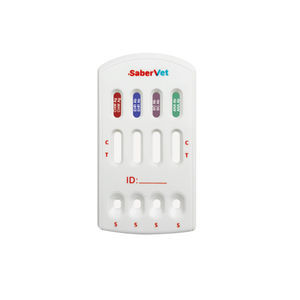
- Laboratory
- Laboratory medicine
- Rapid infectious disease test
- Hangzhou Antigenne Technology Co. Ltd
- Company
- Products
- Catalogs
- News & Trends
- Exhibitions
Rapid infectious disease test Sabervetfor caninesBabesiablood
Add to favorites
Compare this product
fo_shop_gate_exact_title
Characteristics
- Applications
- for infectious diseases
- Patient type
- for canines
- Micro-organism
- Babesia
- Sample type
- blood, serum, plasma, whole blood
- Analysis mode
- immunoassay, lateral flow
Description
The SaberVet Babesia Gibsoni Antibody Rapid Test offered by Antigenne is a lateral flow immunoassay intended for the qualitative detection of Babesia Gibsoni Antibody (BG Ab) in whole blood/serum/plasma sample.
Description
Babesia canis, the body is small, about 1~2.5μm in diameter, ring-shaped or oval, parasitised in the red blood cells can cause Babesiosis.
Clinical symptoms of Babesia gilbertii disease
Clinical observation can be seen in the affected dog spirit of depression, like to lie down anorexia, activity limb weakness, body shaking; auditory high fever (40 ~ 41 ℃); progressive anaemia, reduced or eliminated appetite, malnutrition, obvious emaciation; visible mucous membrane pallor; palpation of the spleen area is sensitive, the kidneys (unilateral or bilateral) is enlarged and painful; urine is dark brown, such as soybean oil-like; mild jaundice. Some sick dogs have liquid with bad odour coming out from mouth and nose, and there are secretions from eyes.
Transmission of babesia
Babesia canis is mainly transmitted by hard ticks, and ticks transmit Babesia canis mostly by egg transmission and stinging. The main vectors of Babesia canis are the blood red tick, the two spined blood tick and the long horned blood tick. Babesia canis is not only parasitised in diseased dogs, but also in carrier dogs for a long period of time. Therefore, sick dogs, carrier dogs and hard ticks are the source of the pathogen of canine babesiosis.
Clinical diagnosis of babesiosis test
The first step is to confirm whether the sick dog has a history of being bitten by a tick or whether a tick has been caught on its body according to the clinical manifestations.
Exhibitions
Meet this supplier at the following exhibition(s):

Other Hangzhou Antigenne Technology Co. Ltd products
Canine
Related Searches
- Blood rapid diagnostic test
- Rapid lateral flow test
- Immunoassay rapid diagnostic test
- Cassette rapid diagnostic test
- Virus rapid diagnostic test
- Serum rapid diagnostic test
- Plasma rapid diagnostic test
- Infectious disease rapid diagnostic test
- Whole blood rapid diagnostic test
- Rapid respiratory infection test
- Urine rapid screening test
- Bacteria rapid diagnostic test
- Rapid feces test
- Clinical rapid diagnostic test
- Nasal rapid diagnostic test
- Obstetrical/gynecological rapid test
- Rapid oral flu test
- Dog rapid test
- Coronavirus rapid diagnostic test
- Laboratory rapid diagnostic test
*Prices are pre-tax. They exclude delivery charges and customs duties and do not include additional charges for installation or activation options. Prices are indicative only and may vary by country, with changes to the cost of raw materials and exchange rates.


